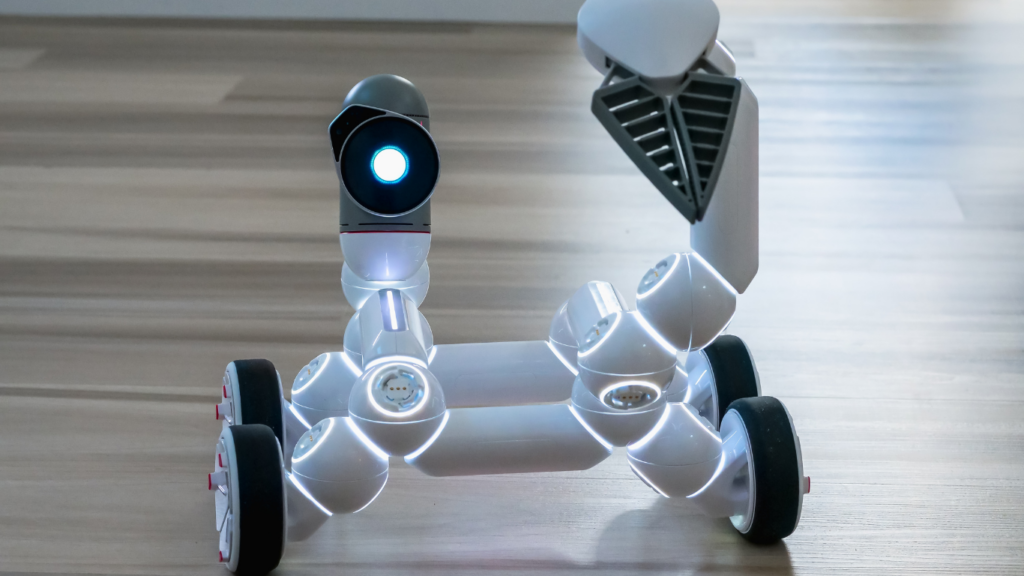Exploring the Latest Innovations in Artificial Intelligence
1. Breakthroughs in Machine Learning and Deep Learning
In the realm of Artificial Intelligence, Machine Learning and Deep Learning have been pivotal in driving innovation.
- Machine Learning algorithms enable AI systems to learn from data and improve their performance without being explicitly programmed.
- Deep Learning, a subset of Machine Learning, mimics the way the human brain works, with artificial neural networks processing data in hierarchical layers.
2. AI in Healthcare: Pioneering Diagnostic Tools
Artificial Intelligence is making significant strides in healthcare by introducing pioneering diagnostic tools that enhance accuracy and efficiency.
AI algorithms can analyze medical images, such as X-rays and MRIs, with a level of precision that surpasses human capabilities.
This technology aids healthcare professionals in early disease detection and treatment planning.
3. The Rise of Autonomous Vehicles: Tech and Trials
Autonomous vehicles represent a cutting-edge application of Artificial Intelligence in the automotive industry.
These self-driving cars rely on AI algorithms to navigate roads, interpret traffic signals, and avoid collisions.
Despite technological advancements, regulatory challenges and safety concerns continue to be key areas of focus for developers and regulators in the field of autonomous driving.
4. Artificial Emotional Intelligence: The Next Frontier?
Artificial Emotional Intelligence is an emerging field that aims to equip AI systems with the ability to recognize and respond to human emotions.
By integrating emotional intelligence into machines, developers seek to enhance user experience and create more empathetic interactions.
This advancement opens up new possibilities for industries like customer service, mental health support, and human-robot interactions.
Navigating the Ethical Dilemma of AI

1. The Debate over AI and Job Displacement
In the realm of Artificial Intelligence (AI), one pressing issue is the concern regarding job displacement.
As AI technologies advance, there is a debate about the impact on the workforce.
While AI can streamline processes and increase efficiency, it’s crucial to address the potential challenges of job displacement in various industries.
Navigating this ethical dilemma involves finding a balance between the benefits of AI automation and the impact on employment opportunities.
2. Bias in AI: The Challenges of Ensuring Fairness
Another significant ethical consideration in AI is the prevalence of bias within AI systems.
Ensuring fairness in AI algorithms is essential to prevent discriminatory outcomes.
The challenge lies in detecting and mitigating biases that can inadvertently perpetuate social inequalities.
Navigating this ethical dilemma requires a concerted effort to develop unbiased AI models and establish rigorous testing methods to address algorithmic biases proactively.
3. Surveillance and Privacy Concerns in an AI-Driven World
As AI applications become increasingly pervasive, concerns about surveillance and privacy have come to the forefront.
The ethical implications of AI in surveillance raise questions about data privacy, consent, and the boundaries of monitoring individuals.
Navigating these concerns involves implementing robust data protection measures, enhancing transparency in AI systems, and fostering a dialogue on responsible AI deployment to safeguard privacy rights in an AI-driven world.
4. Establishing Global AI Ethics Guidelines
In the ever-evolving landscape of AI technology, establishing global ethics guidelines is critical to address ethical dilemmas comprehensively.
Creating a framework for AI ethics involves collaborating across industries and regions to set universal standards for the responsible development and deployment of AI technologies.
Navigating this ethical realm necessitates a harmonized approach to uphold ethical principles, promote accountability, and ensure that AI innovations align with societal values on a global scale.
Balancing Innovation with Responsibility
Integrating Human Oversight into AI Systems
Ensuring a balance between innovation and ethical responsibility in Artificial Intelligence (AI) involves integrating human oversight into AI systems.
This oversight mechanism allows human experts to monitor AI decisions, ensuring that they align with ethical standards and do not diverge into harmful or biased territories.
By having human intervention, AI systems can be regulated, corrected, and guided to make decisions that are ethical and in line with societal values.
The incorporation of human oversight serves as a crucial checkpoint to maintain accountability and transparency in AI applications.
Encouraging Transparency and Explainability in AI
Transparency and explainability are key elements in upholding responsible AI practices across industries. B
y promoting transparency, AI developers and organizations can disclose how AI systems make decisions, helping users understand the rationale behind AI-generated outcomes.
Additionally, explainability ensures that AI algorithms are interpretable, enabling stakeholders to comprehend the reasoning behind AI recommendations or actions.
Encouraging transparency and explainability fosters trust among users and stakeholders, paving the way for more ethical and accountable AI implementations.
Promoting Responsible AI Use Across Industries
Promoting responsible AI use across industries is essential to mitigate ethical dilemmas and ensure the ethical deployment of AI technologies.
By establishing industry-specific guidelines and best practices, organizations can uphold ethical standards while leveraging AI innovations.
This approach involves educating stakeholders about the ethical implications of AI use, advocating for ethical AI design principles, and fostering a culture of responsibility in AI development and deployment.
Through collaborative efforts and proactive measures, industries can harness the transformative power of AI responsibly, prioritizing ethical considerations alongside technological advancements.



 Hisako Turner (Author & Senior Political Correspondent)
Hisako Turner is an author and Senior Political Correspondent at The Vital Insight Hub. Known for her deep understanding of global politics and her ability to break down complex issues, Hisako leads the platform’s coverage of international events and political affairs. Her extensive experience in the field and attention to detail ensure that The Vital Insight Hub offers readers well-rounded and thoroughly researched articles.
Hisako Turner (Author & Senior Political Correspondent)
Hisako Turner is an author and Senior Political Correspondent at The Vital Insight Hub. Known for her deep understanding of global politics and her ability to break down complex issues, Hisako leads the platform’s coverage of international events and political affairs. Her extensive experience in the field and attention to detail ensure that The Vital Insight Hub offers readers well-rounded and thoroughly researched articles.
